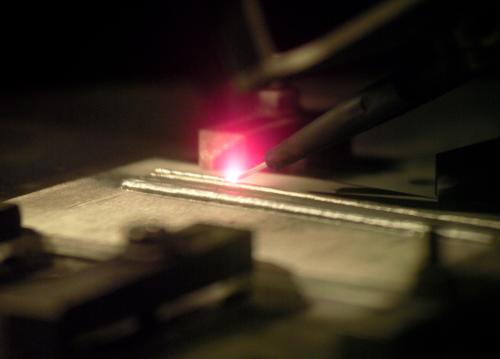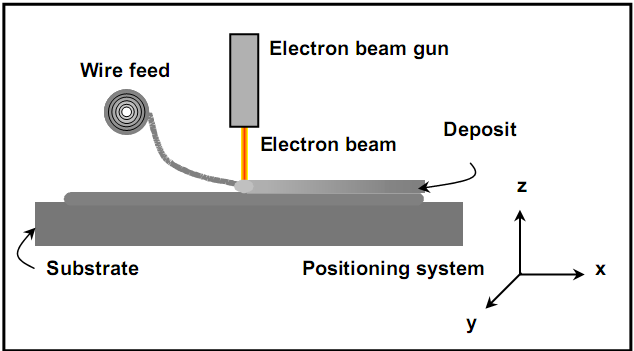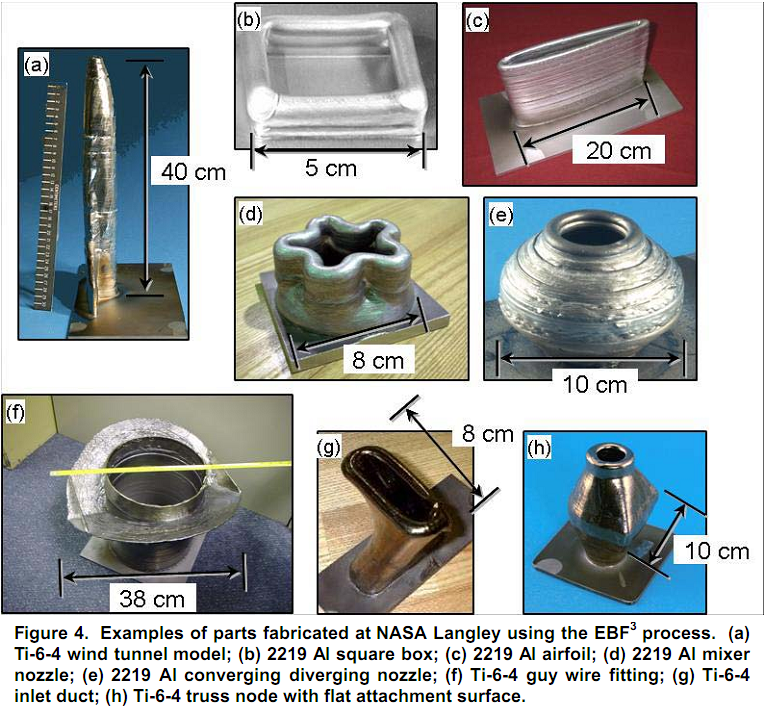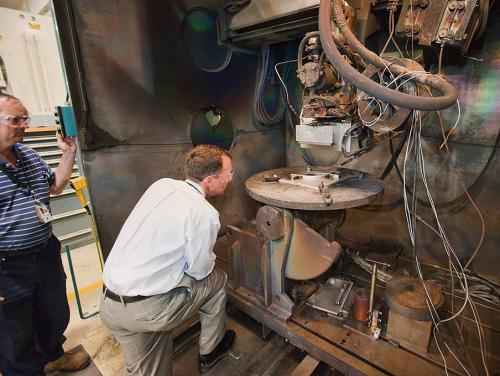NASA has developed a technology for 3D printing of spare parts for spacecraft.
The dream of 3D prototyping lovers is becoming a reality. NASA has developed and tested the technology to produce metal objects of any shape right aboard a spacecraft.

This technology is called the electron beam process of creating objects of arbitrary shape ( Electron Beam Freeform Fabrication EBF3) and is a mixture of 3D printing and electronic welding. Using an electron beam, the metal filament is heated to the melting temperature and the molten material is placed on the substrate layer by layer according to a computer model.

Developers used alloys based on aluminum, titanium and nickel, as the most commonly used in the aerospace industry, to print metal parts tospacecraft . In particular, wires with a thickness of 1.6 mm (an alloy based on aluminum) and 2.4 mm (an alloy based on titanium) were used. What they have done can be seen in the following figure.

As you can see here, the spatial resolution of this technology leaves much to be desired. And indeed, what can be expected from a titanium wire with a diameter of 2.4 mm, because when it melts, the metal also spreads. But let's hope that this process will still scale to acceptable in the industry (especially aerospace) values. After all, the test sample of the installation on which the experiments were carried out in microgravity (for which she was loaded onto a plane and made to circle at high altitude) is not so compact.

In any case, the research team plans to create with the next step an installation that can be delivered to the ISS and already conduct an experiment on its board. And for this, its weight and dimensions will have to be significantly reduced, since every kilogram of cargo launched into orbit costs considerable funds.
Developers create their own printing machine in order to eliminate the need to deliver spare parts for it to the station, after all, why would they be needed if each could be printed on site, there would be only the source material. You can still fantasize and imagine in a remote (or not so) future plants, for example in the asteroid belt, which will immediately build spacecraft from the material that has been extracted.
We will hope that this technology will enter the open market as soon as possible, because the demand for it is already very large. And everyone will get the opportunity to print a bicycle, a car or an army of killer robots ...
Based on Phys.Org

This technology is called the electron beam process of creating objects of arbitrary shape ( Electron Beam Freeform Fabrication EBF3) and is a mixture of 3D printing and electronic welding. Using an electron beam, the metal filament is heated to the melting temperature and the molten material is placed on the substrate layer by layer according to a computer model.

Developers used alloys based on aluminum, titanium and nickel, as the most commonly used in the aerospace industry, to print metal parts to

As you can see here, the spatial resolution of this technology leaves much to be desired. And indeed, what can be expected from a titanium wire with a diameter of 2.4 mm, because when it melts, the metal also spreads. But let's hope that this process will still scale to acceptable in the industry (especially aerospace) values. After all, the test sample of the installation on which the experiments were carried out in microgravity (for which she was loaded onto a plane and made to circle at high altitude) is not so compact.

In any case, the research team plans to create with the next step an installation that can be delivered to the ISS and already conduct an experiment on its board. And for this, its weight and dimensions will have to be significantly reduced, since every kilogram of cargo launched into orbit costs considerable funds.
Developers create their own printing machine in order to eliminate the need to deliver spare parts for it to the station, after all, why would they be needed if each could be printed on site, there would be only the source material. You can still fantasize and imagine in a remote (or not so) future plants, for example in the asteroid belt, which will immediately build spacecraft from the material that has been extracted.
We will hope that this technology will enter the open market as soon as possible, because the demand for it is already very large. And everyone will get the opportunity to print a bicycle, a car or an army of killer robots ...
Based on Phys.Org
')
Source: https://habr.com/ru/post/148502/
All Articles